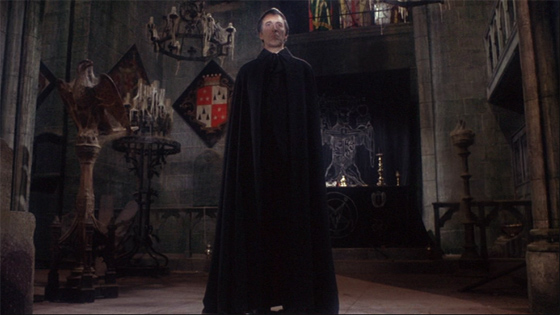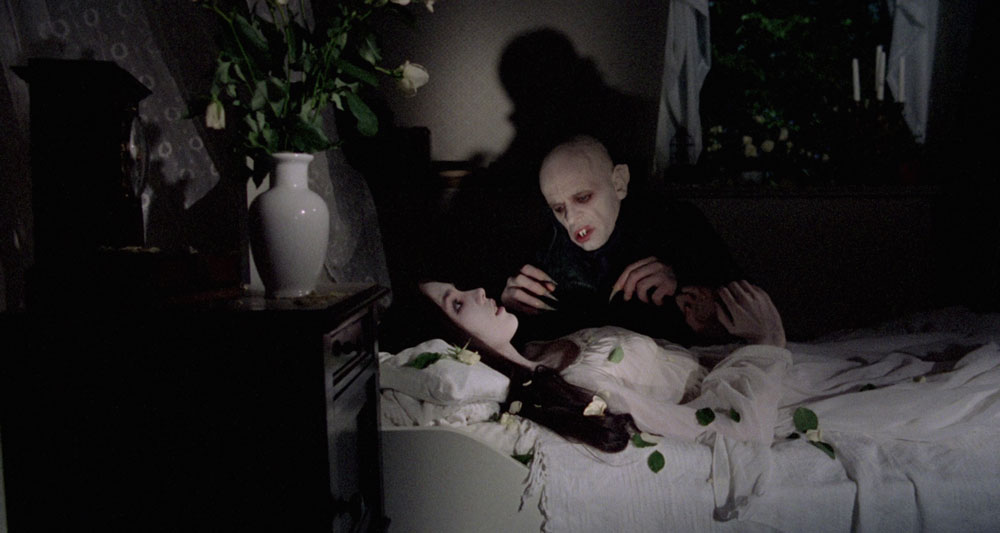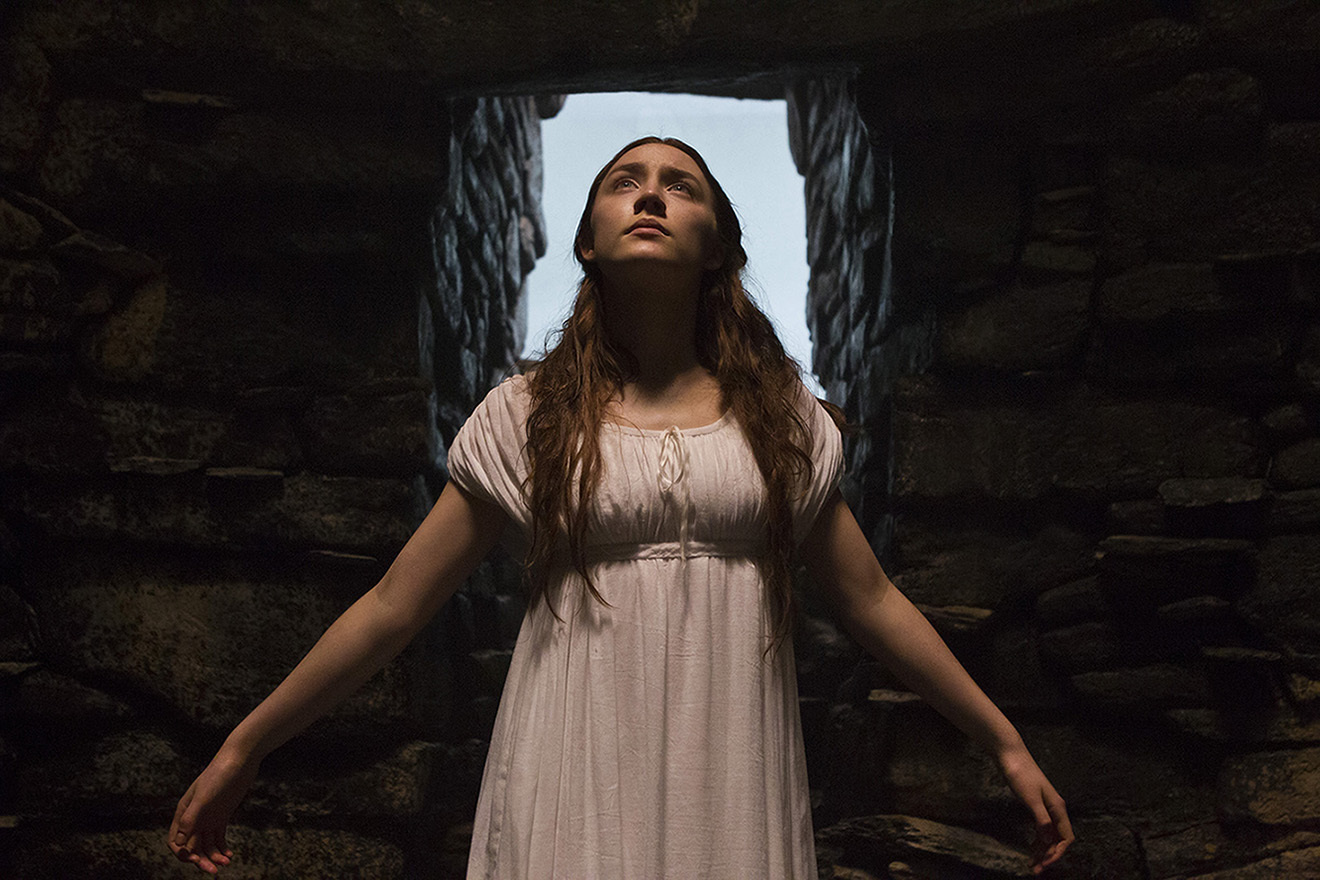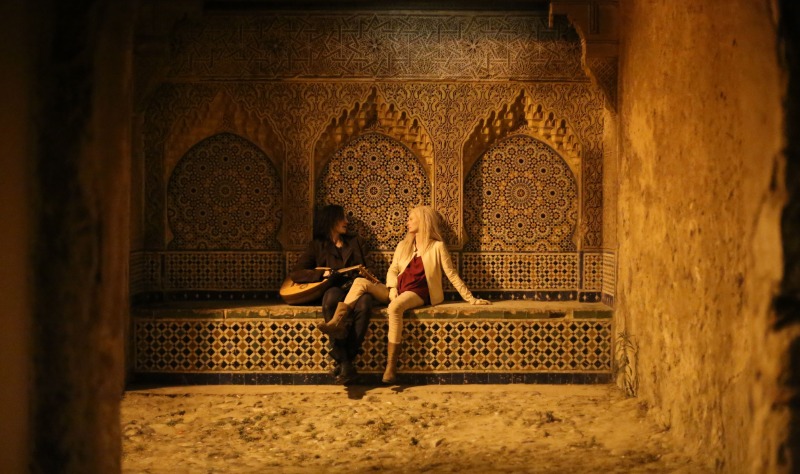- Joined
- Sep 8, 2024
- Messages
- 44
- Reaction score
- 137
- Awards
- 1

In a way that checks the self-importance/over-seriousness of prospective Initiates, the Vampyre has used film as a medium for contacting humans from the first reels of cinema. This is a natural fit given that the Vampyre works primarily with atmospheres, desires, images and energy. An image conveys energy with greater nuance than words and there is an interesting relationship between the Vampyre and what the internet now calls "liminal spaces", a kind of dream logic which allows the mind to grasp Vampyric qualities while circumnavigating the quantity-obsessed left side of the brain. A person who feels comforted or exhilarated (rather than "creeped out") by liminal spaces is probably well-suited for Vampyre Work.
There are thousands of vampire films. Some are spectacular but most are neither enlightening nor entertaining - as with horror generally, there are many, many more bad vampire films than good ones. I've seen hundreds of them and I'd split them into four tiers:
- Good films that convey magical patterns.
- Good films.
- Bad films that convey magical patterns.
- Bad films.
- Fade to Black (America, 1980 - Tier 3)
- An American Werewolf in London (Britain/America, 1982 - Tier 1)
- (Britain, 1991 - Unclassified)
- Basic Instinct (America, 1992 - Tier 1)
- Sunset Boulevard (America, 1950 - Tier 1)
- The Masque of the Red Death (America, 1964 - Tier 3)
- The Shining (Britain/America, 1980 - Tier 1)
- Eyes Wide Shut (Britain/America, 1999 - Tier 1)
- American Beauty (America, 1999 - Tier 1)
- The Story of O (Germany, 1975 - Tier 3)
- What Dreams May Come (America, 1998 - Tier 3)
- Meetings with Remarkable Men (Britain/Afghanistan, 1979 - Unclassified)
- Fight Club (America, 1999 - Tier 1)
- Black Swan (America, 2010 - Tier 1)
- Rope (America, 1948 - Tier 1)
- Black Narcissus (Britain, 1947 - Tier 1)
For mature magicians, Sunset Boulevard is probably the most important film on this list. When you have become the God of your own sphere, there's a temptation to withdraw into one's own Kingdom and protect it against anything which would undermine it. However, this also isolates us from life and reality. The result? Detachment from life and reality and, eventually, madness and decay. The Masque of the Red Death deals with the same themes but it also carries another lesson - no matter how powerful you and your gods are, there are other gods too and, sometimes, they win.
The Shining is a very complicated and very great film. It deals with how places are shaped and charged by the energy which they have absorbed and how sensitivity to those energies can stir them up. This, in turn, can cause those energies to go to work on those sensitive to them. In the case of the son, this happens by turning up his MetaMind/psychic powers to an unimaginable extent (the hotel also wants to absorb these). In the case of the father, it's lycanthropic (I always thought "I'll huff and I'll puff and I'll blow your house in" was the most important line in the film) where warped survival instincts (check out all the references to cannibalism), lust, violence and insanity converge. Like The Shining, Kubrick's Eyes Wide Shut deals in liminal spaces but this time sexual desire, rather than evil, intrudes those spaces. It's a complex film that is misunderstand by conspiracy theorists.
In the late 90s, with the new millennium approaching, many films were made which questioned reality. The most famous of these was The Matrix. The Truman Show and Pleasantville also dealt with similar themes. So does American Beauty. I chose American Beauty because it's a gorgeous film which shows how when we stop feeding what fate has decreed we must, when we no longer ignore that sense of spiritual hunger which cannot be satisfied with material things, the world becomes alive with beauty (even old rubbish takes on a ethereal feel). American Beauty also shows that this process can be destabilising and we can, for a time, look crazy to those still under social control. The Story of O is a film about how sexuality can be used as a means of transformation. It's not a great film but it's one of very, very few films which explore what sexual energy is and what it does, rather than simply using sex to excite an audience. What Dreams May Come, is, also, not a great film and very much belongs to the New Age currents around in the late 90s. However, it is a film which shows life after death as a creative, evolutionary state rather than a static way of being. Meetings With Remarkable Men is a documentary about the Fourth Way and covers much in the way of Sufi wisdom.
Fight Club is a Left Hand Path take on Knowledge and Conversation. Black Swan is also a Left Hand Path take on contacting the HGA but this time that connection is made by a human who is running away from, rather than facing, her trauma. The film also covers the relationship between immortality through art and the hunger for perfection which drives Initiation. Rope is a film about Nietzsche gone wrong. A gay couple, in New York, murder a friend to prove to themselves that they are beyond conventional morality. Then their old philosophy professor stops by for dinner... Black Narcissus is a (excellent) film about a group of English nuns who settle in a former tantric ashram in Northern India. The magic starts to play on their desires which unlocks vast amounts of energy. Some can contain that energy, others cannot.
Now for the Vampyre films...
1. Vampyr (Germany, 1932 - Tier 1)

Vampyr is almost one hundred years old. As such, it's unlikely to appeal to those only used to the films of Michael Bay. It's here because Vampyr is the ultimate in the liminal, dream state as the medium through which the Vampyre appears (the Presence will only be picked up by those attuned to it). When it does appear, it's much more about a certain kind of charged atmosphere than fangs and cloaks. Like a dream, the images in this film will likely stay around and worm their way into your subconscious. A shadowy film where the Vampyre has to be scried.
2. ...Et mourir de plaisir (France/Italy, 1960 - Tier 1)

Known in the English speaking world as Blood and Roses, this film develops the themes of Vampyr but wraps them in erotic, feminine tones rather liminal dream states. Blood and Roses is based on Sheridan Le Fanu's Carmilla, a classic lesbian vampire story. Bisexuality/homosexuality is an old presence in the Vampyre mythos. This is not just a question of hedonism and neither should it be read as aligning with modern identity politics. Instead, there are esoteric things going on with this association. First, sexuality is means of transmitting certain energies and to only transmit to one sex would be to limit one's power. Second, the Vampyre is more interested in energy rather than its final, material manifestation. Finally, the Vampyre pursues beauty in whatever form it takes.
3. Taste The Blood of Dracula (Britain, 1970 - Tier 3)

Taste The Blood of Dracula isn't the best of the Hammer Dracula films (that goes to Dracula: Prince of Darkness from 1966) but it contains the most interesting information for magicians. Here, the Vampyre in conjured, first through pushing the boundaries of pleasure and then through ritual magic. All of the Hammer Dracula series is worth seeing but if heaving corsets and standing around talking about immortal souls isn't your thing, at least dip into this one. Interestingly, London's famous "Highgate Vampire" case occurred in Highgate Cemetery after the cemetery was used to film this movie. I'm not saying someone conjured something they didn't intend to, yet...
4. Martin (America, 1977 - Tier 3)

In the interests of disclosure I should say there are many people who'd think I'm crazy for listing this as a Tier 3 - a lot of people hold Martin to be an excellent film. It's all too gritty-1970s-inner-city-USA for me but I do recognise that there's a lot here that's magically important. Basically Martin is the darkest version of Fade to Black. It's not a supernatural film but the story of a very neglected, very sad boy who tries to empower himself by living as a vampire. This involves some extremely un-virtuous behaviour and awakens the pitchfork peasants in his Eastern European family. The ending is extraordinarily shocking and powerful.
5. Nosferatu the Vampyre (Germany, 1979 - Tier 1)

My favourite vampire film and it inches out the original Nosferatu from 1922. The original is one of the greatest films ever made but it traded almost entirely in fear and loathing. Werner Herzog's remake does not: Nosferatu here is the most potent and realistic expression of Vampyric Presence ever committed to the screen. Wrapped in loneliness and desire, it really has to be felt to be understood. Outside of that extraordinary performance, the film itself is filled with intense stillness and desolate beauty. If you want to "get" the Vampyre, this is essential.
6. Bram Stoker’s Dracula (America, 1992 - Tier 1)

This is the best version of Dracula ever filmed and so it was necessary to include it on this list. Most aspects of vampire folklore are covered. Lycanthropy through manipulating the animal drives of the body, invisibility, nobility, MetaMind, rejection of the Right Hand Path as the start of initiation, love and desire as animating forces, are all covered in depth. It's beautiful to look at too.
7. Interview with the Vampire (America, 1994 - Tier 1)

Probably the most famous entry in gay vampire fiction, Interview with the Vampire expands on many of the themes of Bram Stoker's Dracula in much the same was as Anne Rice's novels expanded on Stoker. This time the themes are less folkloric and more philosophical. The strength of consciousness as a way of surviving death, what it means to support one life by taking others, time, depression, art and religion are all covered.
8. Byzantium (Britain/Ireland, 2012 - Tier 1)

The second film by Neil Jordan on this list and for my money it's even better than Interview. Saying it's a feminist film would put a lot of people off but there's not much here in the way of finger-wagging and complaining. Instead, this beautiful, ethereal film centres on two women in a world were brutality and ugliness rule. They won't accept what fate offers and they take destiny into their own hands. These choices have immense consequences. I won't give too much away but this film revolutionises how a person becomes a Vampyre, hinting that we are "turned" when we confront our most Secret Self through the ordeal of initiation.
9. Only Lovers Left Alive (Britain/Germany, 2013 - Tier 1)

Only Lovers Left Alive is another beautiful, ethereal film which tracks two vampires, a couple, one living among the decay of Detroit, the other in Tangier. Suicidal and reclusive, Adam lives through music and technology in Detroit, surrounded by the images of his dead heroes. He has pursued self-obsession and it has brought him to the point of self-destruction. Older, Eve lives in Tangier and has remained open to the impulses of life. She is a dervish who reads poetry and strives to experience the beautiful without wanting to possess it. Through the melancholy and mysticism, life is shown to be a beautiful thing which the soul can be a part of while still being utterly distinct from it.
Although, in my opinion, they don't have as much to teach about the Vampyric condition, there are a few Tier 2 films that I would recommend to anyone interested in vampire cinema and who might be looking for something to preoccupy them this Halloween. I would count Near Dark, The Lost Boys, Fright Night (80s version), The Hunger, Vampire Circus, What We Do In The Shadows, Daughters of Darkness, Let The Right One In and Let Me In all as either good or excellent films. Happy hunting.
